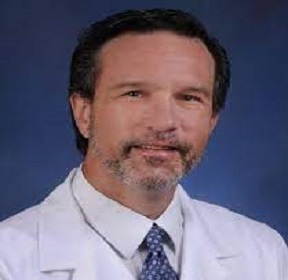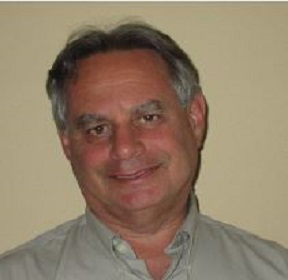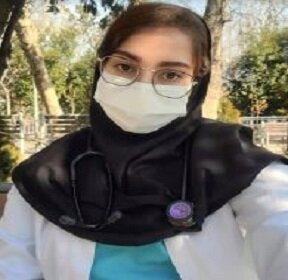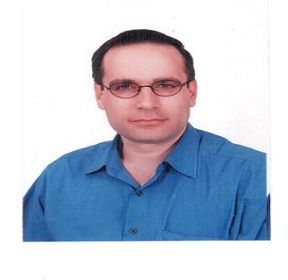Keynote Forum

Title: A Proposed Approach for the Management of Diastolic Dysfunction: Optimization of the E and A Wave Measurement, Morphology and Timing
Abstract:
Much focus over the past few decades has been on the systolic phase of the cardiac cycle, yet it is becoming evident that more advanced therapies are warranted for the clinical management of heart failure, specifically diastolic dysfunction. A novel optimized approach in evaluating and managing diastolic dysfunction/ heart failure is required to evaluate and treat cardiac dysfunction. The proposed measures include the evaluation of the baseline functionality of the cardiac conduction system, Baseline E and A wave Measurement and Morphology (BEAMM) and STRess-induced E and A wave Measurement and Morphology (STREAMM) with timing and variability taking into consideration of both macro and micro diastolic myocardial processes. Implementation of a management plan that includes echocardiographic optimization (ECHO-Op) and pharmaceutical optimization (PharmOp) into the current guideline recommendations for the evaluation and management of diastolic dysfunction/ heart failure is an additional goal. Clinical adoption of the proposed approach may lead to earlier identification of patients at risk of diastolic dysfunction/ heart failure as well as other associated cardiac symptoms and downstream pathological processes.
Biography:
John R. Dylewski, MD, FHRS, FACPAS is a cardiac electro physiologist and professor of medicine in active clinical practice for the last 20+ years with an extensive and diversified background in materials engineering and medical applications of artificial intelligence to improve healthcare delivery. With the abundance of valuable data generated for patient care and the continuous production of scientific knowledge, Dr. Dylewski found it significantly challenging to deliver accurate, up-to-date and expeditious care to his tens of thousands of patients resulting in the development of the Complaint2Care model for a novel healthcare delivery platform, LifeSaver, powered by Apollo Artificial Intelligence.

Steven J Adelman
USATitle: Basis of Novel Therapeutic approaches for Cardiovascular Disease
Abstract:
Statement of the Problem: Cardiovascular Disease remains the major killer in the Western world despite the demonstrated benefits of lipid lowering therapies. Novel approaches are being investigated to address further therapeutic needs, currently with limited success. Processes leading to heart attacks include lipid deposition (i.e. cholesterol), lesion progression and recruitment of immune cells with their activation, subsequent plaque rupture and release of prothrombotic components. Ultimately, blockage of blood flow occurs. Of the pathways involved, two major mechanistic pathways have been under study: 1). elevation of HDL, by any means, to enhance cholesterol efflux and removal of cholesterol from the vascular wall to drive the process of reverse cholesterol transport (RCT). This is movement of cholesterol from cells of the atherosclerotic vasculature to HDL in the blood and subsequently to the liver for modification and excretion to the gut for elimination from the body, and 2). regulation of inflammatory pathways in attempts to inhibit vessel wall plaque degradation and rupture leading to heart attacks.
Epidemiologic studies have shown significant correlations of HDLc levels with reduced cardiovascular events. A number of methods for elevating HDL have been under study, among which a significant focus has been to inhibit the activity of cholesterol ester transfer protein (CETP). CETP is an enzyme that transfers cholesterol ester from HDL to LDL. Blocking this enzyme leads to elevations of HDL cholesterol and increases in HDL particle size. Though this approach has successfully enhanced cellular cholesterol efflux, the first step in RCT, numerous attempts in the clinic have failed to show benefit in reducing cardiovascular events. Recent findings have suggested that subsequent function of the HDL particles may be affected in a negative way, with activities of HDL modifying enzymes reduced as well as uptake by hepatic cells. Thus, although initially seemingly successful in enhancing efflux, cardiovascular events were not reduced. A number of additional / novel approaches to HDL modulation are now under study.
A second approach currently under investigation is regulation of clinical events through inhibition of inflammation in the vascular wall. With the initiation of atherosclerosis, lipid is deposited and immune cells including macrophages are recruited to the site. As lesions develop, cells become engorged with lipid, becoming foam cells, and through during these processes, become activated. Activation enhances cell recruitment and release of cytokines and expression of adhesion molecules. Proteolytic enzymes are also released, with breakdown of the intimal surface and of vulnerable regions of the lesion cap, resulting rupturing of the plaque. Pro-thrombotic contents of the vessel wall are then released, leading to blockage of the lumen of the vessel, and of blood flow. Inhibition of immune cell recruitment and activation are an important approach to therapeutic treatment of cardiovascular disease, with some success established, but significant improvements to the approaches needed. Innovative methods to effect this process will be discussed.
Conclusion: Several novel therapeutic approaches to treatment of cardiovascular disease are under study, but improvements to achieve therapeutic benefit will be required.
Biography:
Steven J. Adelman, Founder and CEO of Vascular Strategies LLC, and CSO, NanoPhagix LLC has more than 25 years’ experience in drug discovery and development. Previously led several initiatives at Wyeth Pharmaceuticals: Senior Director, Cardiovascular and Metabolic Disease Research and Senior Director, Atherosclerosis CV/Women’s Health. Activities included identifying and validating discovery and development programs (small molecules and biologics), advancing more than 10 compounds through IND into clinical development. Expertise includes atherosclerosis and CVD, inflammation, immune biology, and women’s health. Worked extensively on rapamycin (sirolimus, Rapamune) for transplant indications and subsequent incorporation on the Cypher-stent, first successful drug-eluting coronary stent. Honors and memberships include elected Fellow American Heart Association; Golden Heart Member, Council on Arteriosclerosis, Thrombosis and Vascular Biology, Basic Sciences Council, Functional Genomics and Translational Biology Interdisciplinary Working Group, AHA, and International Atherosclerosis Society. Authored more than 100 articles and abstracts and holds over 30 patents.

Dipak P. Ramji
United KingdomTitle: Nutraceuticals in the prevention and treatment of atherosclerosis and cardiovascular disease
Abstract:
Atherosclerosis, an inflammatory disorder of medium and large arteries and the underlying cause of myocardial infarction and cerebrovascular accidents, is responsible for more global deaths than any other disease. Although reduction in mortality from atherosclerosis and its complications has been achieved recently by lifestyle changes and pharmaceutical intervention, this is expected to reverse in the future because of global increase in risk factors such as hypercholesterolemia, obesity, and diabetes. Current pharmaceutical therapies against atherosclerosis are associated with substantial residual risk for cardiovascular disease together with other issues such as side effects. In addition, pharmaceutical agents against many promising targets have proved disappointing at the clinical level. It is therefore essential that the molecular basis of atherosclerosis is fully understood, and new therapeutic/preventative agents or targets are identified and validated.
The major focus of recent research in my laboratory is to understand the molecular mechanisms underlying the protective anti-atherogenic actions of natural products using a combination of in vitro and in vivo model systems together with biochemical, molecular biology and immunological approaches. Our research has provided novel insights into the mechanisms underlying the protective actions of several nutraceuticals. This presentation will discuss the molecular basis of atherosclerosis and opportunities for drug discovery, current therapies against the disease and their limitations, emerging therapies targeting lipid metabolism and the inflammatory response, new challenges, and the potential of natural products as preventative and therapeutic agents with focus on probiotic bacteria.
Biography:
Dipak Ramji is Professor of Cardiovascular Science and Deputy Head at the School of Biosciences in Cardiff University. He is also Fellow of the Learned Society of Wales. He received his BSc (Hons) degree (Biochemistry) and his PhD (Molecular Biology) from the University of Leeds. This was followed by post-doctoral research at EMBL (Heidelberg) and IRBM (Rome) with fellowships from the Royal Society and the EU. His current research is focused on understanding how natural products regulate cellular processes in heart disease with the goal of attaining deeper mechanistic insight and identifying preventative/therapeutic agents. He has published over 150 research articles (h index 41 and i10 index 76 with over 8350 citations), including 880-page book in 2022 on Methods in Atherosclerosis. He is an Editorial Board member of 16 international journals; regular organising committee member, speaker, and track/session chair at international conferences on heart disease; involved in grant evaluation for over 20 organisations; and supervised over 25 PhD students

John K Maesaka
USATitle: New approach to hyponatremia yields high prevalence and identification of natriuretic protein that causes renal salt wasting and strategies to reduce fluid overload in heart failure
Abstract:
John K Maesaka was born in Hawaii, received degrees from Harvard College and Boston University School of Medicine, did his medical residencies at BarnesJewish Hospital at Washington University In St. Louis and Mount Sinai Hospital in New York and renal fellowship at Mount Sinai Hospital. His interest-driven decision to spend 5 years exclusively in the renal physiology laboratory at Mount Sinai Hospital as a renal fellow and member of the faculty proved to be the best investment he made to pursue an academic career in medicine. He was involved in developing colorimetric methods for the determination of uric acid and phosphorus in blood and urine that were applied to studying the transport characteristics of both electrolytes by renal micropuncture techniques in rat kidney. He developed several bioassays to demonstrate the presence of a natriuretic factor in the blood of patients with renal salt wasting and Alzheimer’s disease and more recently identified the elusive natriuretic factor after more than a 25-year pursuit.
Biography:
The approach to hyponatremia is in a state of flux, especially in differentiating syndrome of inappropriate secretion of antidiuretic hormone (SIADH) from cerebral-renal salt wasting (RSW) because of diametrically opposite therapeutic goals of water-restricting in SIADH and administering saline in RSW. We differentiated SIADH from RSW by utilizing an algorithm based on fractional excretion (FE) of urate and failure of isotonic saline infusions to dilute the urine or correct the hyponatremia in SIADH as compared to excretion of dilute urines and correction of hyponatremia in RSW . We also identified the natriuretic factor we previously demonstrated in neurosurgical patients with RSW and in Alzheimer’s disease (AD).
Results: Of 62 hyponatremic patients, (A) 17 patients (27%) had SIADH, 11 were nonresponsive to isotonic saline, and 5 normalized a previously high FEurate after correction of hyponatremia; (B) 19 patients (31%) had a reset osmostat based on normal FEurates and spontaneously excreted dilute urines; (C) 24 patients (38%) had RSW, 21 had no clinical evidence of cerebral disease, 19 had saline-induced dilute urines; 2, 10 required D5W to prevent rapid increases in serum sodium to prevent osmotic demyelination, 11 had persistently increased FEurate after correction of hyponatremia. (D) 1 patient had Addison disease with a low FEurate and (E) 1 patient (1.6%) had hyponatremia due to hydrochlorothiazide. We identified haptoglobin related protein without signal peptide (HPRWSP), the first potent inhibitor of proximal tubule sodium transport, as the natriuretic factor in a patient with RSW and in AD.
Conclusions: RSW is much more common than is perceived with 21 of the 24 patients with RSW lacking evidence of cerebral disease, supporting our proposal to change cerebral salt wasting to RSW. HPRWSP can serve as a biomarker for RSW to simplify diagnosis of RSW on first encounter, direct proper therapy, improve clinical outcomes and identifying a new syndrome of RSW in AD. We will discuss how HPRWSP will more effectively treat congestive heart failure when combined with a distal diuretic.
Speakers

Christopher Maria Münch
ItalyTitle: A web-based prehabilitation program for on-table extubation after minimally invasive transaxillary mitral valve surgery
Abstract:
Early extubation after cardiac surgery has become popular in the late 1990s and has subsequently shown to be safe and to be associated with reduced postoperative ICU and hospital stay, especially in the context of minimally invasive heart surgery. More recently, enhanced recovery after surgery (ERAS) protocols have been applied to cardiac surgery to improve patients experience and allowing shorter postoperative stays and earlier hospital discharge. Since 2016 we have established an ERAS ultra-fast track protocol with routine on-table extubation after direct view transaxillary minimal invasive mitral valve surgery. This novel approach has shown to be safe and is associated with reduced complications, shorter length of stay and lower rates of early mortality. More recently we have developed a web-based online platform for our patients, providing pre and posthabilitation assistance in order to improve overall perioperative ‘fitness’. This patient centered program is based on a series of video tutorials for step-by-step physical exercises under the guidance of our respiratory therapists. Patients’ adherence to the program and individual physical improvements are reviewed on a regular basis by physicians and respiratory therapists. The 2019 ERAS guidelines pointed out that pre and posthabilitation programs are considered crucial for the success of every ERAS program but, until today, few centers worldwide are providing similar approaches. We believe that the direct patient involvement in our pre and posthabilitation program represents a further step towards a better understanding of the patients needs and may contribute to the reduction of preoperative anxiety.
Biography:
Christopher Münch is director of the Cardiac Anesthesia and Intensive Care Department since 2013. Since 2016 a minimal invasive cardiac surgery program was started in the department with special attention to ultrafast track anesthesia after mitral valve surgery. The center treats approximately 1200 adult patients/year addressing all major cardiac pathologies except heart transplantation. Recently, regional anesthesia techniques were integrated in the daily practice and all minimal invasive surgical patients are treated with regional chest blocks. A web-based patient platform has been developed in collaboration with the Polytechnical University of Marche to further improve patients experience and to enhance perioperative fitness of the patients. The Cardiac Center of Ancona receives extensive visiting from surgeons and anesthetists from all over the world who are interested in appraising the details of fast track protocols

Juliana Giorgi
BrazilTitle: Spontaneous Coronary Artery Dissection in the Brazilian Scalibur Registry. Insights from Demographic and Angiographic Characteristics of 219 Patients
Abstract:
Background: Over the last decade, there has been a new understanding of spontaneous coronary artery dissection (SCAD) mainly due to data derived from registries in the United States and Europe. Findings from other ethnicities including Latin America are not well known.
Methods: In the Scalibur Brazilian registry, a retrospective and prospective data from 22 Hospitals were collected regarding clinical presentation, and angiographic characteristics.
Results: 219 patients with SCAD (85% women, mean age 50.15±10.56 years) were included; patients had none or few traditional risk factors for coronary artery disease (Table). Identifiable triggering factors (present in 57.8% of cases) included emotional stress (21%) physical stress (5.42%), and vasoconstrictor substance-use (1.20%). Most patients presented as non-ST elevation myocardial infarction (non-STEMI) following by ST elevation myocardial infarction (STEMI) and unstable angina. Fibromuscular dysplasia, not systematically screened, was found in few cases (4.21%). Left anterior descending artery was most frequently affected (57%), and approximately one fifth of patients had multiple coronary territories involvement. SCAD classification of type II, followed by type I were the most common angiographic findings. Cardiogenic shock on admission was present in 3% of cases, affecting most (50%) patients in the pregnancy-associated period. Yet, 73.49% of patients were managed medically, 21% had percutaneous coronary intervention and 0.6% had coronary artery bypass grafting (Table).
Conclusion: In this large Brazilian cohort, SCAD affected mostly young women with none or few classical risk factors for coronary artery disease. Demographic, clinical, and angiographic findings seem to be similar to other ethnicities. This condition should be considered as a differential diagnosis in acute coronary syndrome, especially in young women (< 50 years).
Biography:
Performance driven professional over 16 years of clinical expertise as cardiologist and heart failure specialist gained from esteemed positions at the top hospitals in Sao Paulo. Robust and current knowledge of scientific, clinical, regulatory, commercial, and competitive landscape in applicable therapeutic area. Demonstrated leadership skills in managing time and overseeing projects. Exhibited attention to detail and utilized public speaking and written communication skills to convey information effectively. Resolved complex problems, showcasing analytical thinking and problem-solving abilities. Cultivated solid and positive relationships with team members, fostering collaboration. A stimulated and organizational physician in search of constant learning, passionate about technology and innovation, and committed to enhance health education and mentoring.

Marina A. Chichkova
RussiaTitle: Immunological predictors of myocardial injury development after coronary artery stenting
Abstract:
More than three million myocardial revascularization procedures are performed annually in the world. Recently, the ratio of angioplasty with coronary artery stenting and coronary artery bypass grafting in Europe is 2:1, in the USA and Japan – 6:1. Small myocardial injuries occur in 8-15 percent of cases after planned intracoronary stenting. It is often manifested only by the level of increase in cardiospepific immunological markers of myocardial damage without clinical and electrocardiographic signs of myocardial damage. The results of studies of 100 patients with coronary artery disease and stable angina (the second and third functional class) in one day after percutaneous coronary intervention with implantation of intracoronary stents (Xience, Taxus, Cypher, Vision, Kaname) in the department of the Federal Center for Cardiovascular Surgery during one year of follow-up were studied. Study group: patients on the first day after intracoronary stenting without clinical manifestations and changes in electrocardiography, but with immunochemical manifestations of small myocardial injury syndrome. Comparison Group: patients on the first day after intracoronary stenting without complications. Control group: 30 patients before intracoronary stenting. In the blood of patients of the studied groups, the levels of MB-creatine phosphokinase and troponin T were determined in dynamics by electrochemiluminescence using Elecsys reagent kits from Roche on the Elecsys2010 immunochemical analyzer from Roche Diagnostics (Switzerland). As a result of the conducted studies, some immunological and clinical-instrumental predictors of the risk of developing small myocardial injury syndrome after intracoronary stenting were established in patients with coronary artery disease and stable angina of the second functional class and the third functional class: diffuse coronary artery lesion (p<0,001), stenosis length – 24,07±1,3 mm (p<0,001), recanalization and stenting of coronary arteries (p<0,05), lateral branch occlusion (p<0,05), implantation of metal stents (p<0,05), implantation of two or more stents (p<0,05), the level of blood leukocytes – 10,23*10^9 / l (p<0,05), systemic atherosclerosis (p<0,05). Small myocardial injuries have an adverse effect on the long-term results of intracoronary stenting in patients with coronary artery disease and stable angina of the second functional class and the third functional class even after one year of follow-up after surgery: return of angina (2,86%), repeated hospitalizations (5,71%).
Biography:
In 2005 has completed her PhD at the at the National Medical Research Center of Cardiovascular Surgery. Head of the Department of Cardiology of the State Medical University from 2008 to 2018, then professor of this Department. Head of the Primary Vascular Center for the Treatment of Patients with Acute Coronary Syndrome and Acute Stroke from 2013 to 2018. Since 2018 has been a professor at the Department of Cardiology of the Central Medical Academy of the Presidential Administration of RF. She is the chief physician of the Cardiological Center. She is the author of 12 Patents for innovations, 3 monographs, 12 educational tutorial. Awarded a Silver and a Bronze Diploma of the International Championship (International Academy of Sciences and Higher Education, London, UK, 2012). She has published over 300 articles, has been serving as an of 5 editorial boards member.

Vitor Giatte Angarten
BrazilTitle: Effects of periodized training regime on vascular and autonomic systems in patients with coronary artery disease: a pilot randomized controlled trial
Abstract:
Background: Periodized exercise training regime in clinical populations have not been well studied until currently days. The purpose of this study was to compare the effects of a periodized training regime to a non-periodized training regime in cardiorespiratory fitness (CRF), heart rate variability (HRV) and pulse wave velocity (PWV) parameters.
Methods: Twenty-four trained patients with stable coronary artery disease (CAD) (64±10 years) were randomized in 2 groups: linear periodized combined exercise training (LPCET) and non-periodized combined exercise training (NPCET) which performed 60 exercise training sessions (3 times per week) for 6 months. Baseline and end-protocol evaluations included: 1) incremental symptom-limited cycling cardiopulmonary exercise test; 2) one-repetition maximum; 3) arterial stiffness; and 4) heart rate variability.
Results: neither of the 2 groups increased VO2 peak nor overall strength (p>0.05). The LPCET group increased 22% in Central pulse pressure (p=0.04); decreased 16% in upper limb PWV (p=0.009); 7% in Central diastolic blood pressure (p=0.05) and 11% in left ventricular ejection time (LVET) (p=0.05). The NPCET group decreased significantly 10% in upper Limb PWV (p=0.049), 9% in lower limb PWV and 16% in LVET (p=0.015). There were no significant differences between pre-post training in HRV index in both groups. Moderate Pearson´s correlation was found in LPCET: VO2peak-Aortic PWV and SDNN-Aortic PWV (p<0.05; r=-0.4; r=-0.3 respectively).
Conclusion: Long-term non-periodized training regime in stable CAD patients was more effective to improve peripheral arterial stiffness than the periodized training regime. Both training models were equally effective in maintaining the HRV index. The current study suggests that exercise training may improve arterial stiffness but not autonomic balance independently of exercise type training prescription in trained CAD patients. More studies have to be performed to understand the PWV-HRV and the effects of new training approaches.
Future directions: A gap may exist in exercise protocols when the daily physiological individuality is not considered. As HRV as daily physiological state, both are constant variable. The most appropriate stimulus may be the one that respects the direct and indirect conditions of the organism. Correlating self-perception (i.e. Brums and Borg scale) and physiological variables may be an alternative to enhance the improvement of health and performance.
Biography:
Graduated in Physical Education from the Regional University of Blumenau Foundation (2007); Postgraduate courses related to special groups and biomechanics between 2009-2011 at the Gama Filho University. Postgraduate with emphasis on the improvement in cardiovascular rehabilitation at the Instituto do Coração; Master in Human Movement Sciences from the State University of Santa Catarina (2013). University Teacher (2010-2015) at FURB institutions; UNIDAVI; UNIFEBE; UNIASSELVI; UNIMAX (current job 2022) (Biochemistry of Exercise; Resistance Training; Biomechanics & Kinesiology; Technology in Physical Education). Ph.D scholarship by CNPQ “Ciências Sem Fronteiras” program (Faculty of Human Motricity, 2015-19); Responsible for the teaching/research/extension process at the Cardiovascular Rehabilitation Center of the University of Lisbon (CRECUL). Dissertation/Thesis theme: Acute Responses and Chronic Effects of Autonomic/Cardiovascular/Cardiopulmonary Systems following exercise training. Research and professional activities in the area of health, training, cardiology, exercise biochemistry, musculoskeletal rehabilitation, cardiovascular rehabilitation, stress, nervous system and vascular system.

Stefania Czapp
PolandTitle: Conduction abnormalities after TAVI
Abstract:
Transcatheter aortic valve implantation is a procedure that allows the aortic valve replacement via minimally invasive technique. We can distinguish several access methods: transfemoral, transapical, subclavian, direct aortic as well as transcaval. Patients who underwent TAVI have a lower mortality rate in comparison with those who have non-operated severe aortic stenosis. Although advantages prevail over disadvantages, the procedure may entail conduction abnormalities. The most common are: left bundle branch block and high-grade atrioventricular block. The proximity of the aortic valve to the conduction pathways (possible injury as a result from interventional equipment interactions) as well as the anatomical variants of AV nodes may predispose patients who underwent TAVI to higher risk of conduction abnormalities. We can distinguish several factors that have the evident impact on previously described complications, such as: pre-existing RBBB, type of the transcatheter valve, annular size, depth of the implantation and the degree of mitral and aortic valve calcifications. The electrocardiographic recordings that are the cause of concern are narrow QRS complexes (especially before TAVI) as well as fluctuating changes in PR interval. Among risk factors for LBBB development we can underline the self-expandable prostheses (in comparison with balloon-expandable ones) and larger implant depth. The behavior of heart blocks has been noticed to change dynamically during and after aortic valve replacement. Patients who presented conduction abnormalities before TAVI, were in the higher risk group. Majority of the heart blocks are reversible. The management of conduction abnormalities after transcatheter aortic valve implantation is based on the clinical status of our patient and ECG monitoring. Temporary pacemakers and PPM are being implanted if needed.
Biography:
Stefania Czapp has graduated from Medical University of Gdańsk in 2021 and now she is doing her postgraduation internship in Szpital Morski im. PCK in Gdynia (Poland). She has the big interest in Cardiosurgery and is planning to do her PhD in this field of science in Poland.

Soichiro Usui
JapanTitle: Cardiohepatic interactions in the pathogenesis of heart failure
Abstract:
In heart failure, pump function is impaired, blood flow is reduced, and energy metabolism in tissues and organs throughout the body becomes dysfunctional. The liver is the largest organ in the human body and plays a central role in lipid and sugar metabolism, protein synthesis, detoxification, and bile acid production. It has long been known that there is an interaction between the heart and liver via blood circulation and the autonomic nervous system, especially in acute and chronic heart failure, which can cause acute ischemic hepatitis (shock liver) and chronic congestive liver injury. In recent years, basic research has accumulated, indicating the possibility of further interorgan communication between the heart and liver (heart-liver interaction). Hepatokine is a liver-derived hormone synthesized and secreted by hepatocytes. The liver secretes hepatokine to regulate glucose and lipid metabolism throughout the body, and its effects on the heart have recently been reported as a target organ of hepatokine. Selnoprotein P (SeP), a hepatokine, is rich in selenocysteine and has been reported to function as a transport protein for the trace element selenium.
In a mouse model of myocardial ischemia-reperfusion, we found that myocardial infarct size was significantly reduced in SeP-KO mice. Mice overexpressing SeP in the liver showed an increase in myocardial infarct size, indicating the action of SeP as an aggravating factor for myocardial infarction.
In a mouse model of transverse aortic constriction (TAC), a pressure overload-induced heart failure model, we found that hepatic expression of SeP in WT was significantly increased by TAC. TAC-induced cardiac hypertrophy and pulmonary congestion were significantly attenuated in SeP KO compared to WT. In addition, myocardial upregulation of fetal-type genes such as atrial and brain natriuretic factor and interstitial fibrosis of the heart were significantly less in SeP KO than in WT mice after TAC. These results suggest that the absence of endogenous SeP attenuated cardiac hypertrophy, dysfunction and fibrosis in response to pressure overload in mice. SeP possibly plays a maladaptive role against progression of heart failure through the liver-heart axis.
SeP secreted from the liver is expected to elucidate new mechanisms involved in the pathogenesis of cardiac disease and to develop therapies based on the cardiohepatic interaction.
Biography:
Soichiro Usui is an Associate Professor in Cardiovascular medicine in Kanazawa University, Japan. He is also Fellow of the European Society of Cardiology and the Japanese Circulation Society. He obtained his PhD in Medical Science from Kanazawa University, Japan. He held a postdoctoral position at the University of Medicine and Dentistry-New Jersey Medical School, USA. He is interested in molecular mechanisms of cardiac remodeling in heart failure and adipose-derived regenerative cell research. He published over 90 refereed journal papers.

Elizaveta Strebkova
Russian FederationTitle: Long follow-up the effectiveness of thoracoscopic ablation of persistent and long-standing atrial fibrillation
Abstract:
Statement of the Problem. Atrial fibrillation (AF) has been identified as one of the most common arrhythmias in clinical setting. The prevalence of AF in adults is estimated to be between 1-2% currently, which is expected to increase by two- to threefold due to extended life expectancy [1, 2]. An important issue in modern arrhythmology is the search for highly effective, minimally invasive treatments for isolated non-paroxysmal AF, which represents up to 70% [3].
The purpose of this study is to evaluate the efficacy of thoracoscopic ablation (TSA) of persistent and long-standing atrial fibrillation in the long-term follow-up period.
Material & methods. From 2019 to 2021 years, 50 patients with persistent (I group) and 50 long-standing AF (II group) underwent TSA and exclusion left atrial appendage (LAA). Patients with paroxysmal AF, any organ heart pathology and decompensated conditions were not included in the study. The effectiveness of the procedure was defined as the absence of any atrial tachycardia (AF, supraventricular tachycardia, atrial flutter) documented on an ECG or on a 24-h HM ECG more than 30 seconds.
Surgical procedure. The procedure was performed according to the "Box lesion set" with additional linear ablations along the posterior wall of the left atrium (LA) and in projections of the ganglion plexus. Isolation of pulmonary vein (PVI) was performed using an ablative bipolar clamp (AtriCure, Inc., West Chester, Ohio, USA). LAA exclusion was performed through one of the left-sided ports using an endostapler, monitored by transesophageal echocardiography (Figure 1). Transmurality and the achievement of bidirectional conduction through the ablation lines performed (exit and entry block) were assessed at all stages of surgery.
Results. Median age of patients was 58 (51-63) years and 56 (48-62.75) years, with a male domination of 75% (n=33) and 70.83% (n=34) in groups I and II, respectively. There was a statistically significant difference between the groups preoperatively only for the duration of AF of 2.25 (0.77-5) years in group I and 5 (2-8) years in group II (p=0.001*).
The mean follow-up period of the patients was 2.8±0.7 years. The overall efficacy of TSA after 3, 6 and 12 months was 82.7%, 81.6%, 73.5%, respectively. In the long-term follow-up period, freedom from AF was 70.7%.
Efficiency of epicardial ablation of persistent AF was 86.0% and 78.0%, and of long-standing AF 77.1% and 68.8% after 6 and 12 months, respectively (p=0.14).
Discussion. The heterogeneity of patients included in early studies makes it difficult to interpret the efficacy of TSA of persistent and long-standing AF. Whether additional lines of ablation outside the "Box lesion set" improve the efficacy of TSA is not fully understood [4]. The surgical protocol presented in our study was supplemented with ablation lines along the posterior wall of the LA and in the projection of the ganglion plexus, which improved the efficacy of TSA in the long-term follow-up to 70.7% compared with the data where ablations were performed exclusively according to the "Box lesion set" [5].
Conclusion. Videoassisted thoracoscopic ablation of atrial fibrillation should be considered a promising method of arrhythmia management in patients with persistent and long-standing atrial fibrillation. Additional linear ablations along the posterior wall of the left atrium and in the projection of the ganglion plexus significantly improve the effectiveness of the procedure in the long-term follow-up.
Biography:
Elizaveta Strebkova (28 years). She graduated with honors from the Kursk State Medical University, than She graduated from a residency by cardiovascular surgery from the A.V. Vishnevskiy National Medical Research Center of Surgery in 2021 and wished to continue studying, went on for a Post Graduate by cardiovascular surgery and arrhythmology. The aim of her scientific work is “Effectiveness of thoracoscopic treatment of persistent and long-standing forms of atrial fibrillation”. She assist in all cardiac surgeries and take an active part in the scientific work our department. According to her work, theses and articles have been published. For the first time in our center, simultaneous two-way access is offered when performing thoracoscopic ablation, which significantly reduces the operation time.

Zohreh Tutunchian
IranTitle: Cardiovascular Complications of COVID-19 among Pregnant Women and Their Fetuses: A Systematic Review
Abstract:
Background: COVID-19 is a viral infectious disease leading to a spectrum of clinical complications, especially cardiovascular. Evidence shows that this infection can potentially accompany a worse outcome in pregnant women. Cardiovascular complications in mothers and their fetuses are reported by previous studies.
Objective:
In this systematic review, we aim to investigate the cardiovascular complications of COVID-19 during pregnancy in the mothers and fetus, according to the published literature. Method: We systematically searched the online databases of PubMed, Scopus, Web of Science, and Google Scholar, using relevant keywords up to April 2022. We included all observational studies reporting cardiovascular complications among COVID-19-affected pregnant women and their fetuses.
Results: We included 74 studies containing 47582 pregnant COVID-19 cases. Pre-eclampsia, hypertensive disorders, cardiomyopathy, heart failure, myocardial infarction, thrombosis formation, alterations in maternal–fetal Doppler patterns, and maternal and fetal arrhythmia were reported as cardiovascular complications. The highest incidences of pre-eclampsia/eclampsia among COVID-19 pregnant cases, reported by studies, were 69% and 62%, and the lowest were 0.5% and 3%. The highest and lowest incidences of fetal bradycardia were 20% and 3%, and regarding fetal tachycardia, 5.4% and 1%, respectively.
Conclusion: SARS-CoV-2 infection during pregnancy canpotentially be associated with cardiovascular complications in the mother, particularly pre-eclampsia and heart failure. Moreover, SARS-CoV-2 infection during pregnancy can potentially cause cardiovascular complications in the fetus, particularly arrhythmia
Biography:
Zohreh Tutunchian is a 5th year medical and MPH student at Shahid Beheshti University of Medical Science (SBMU) and also a member of Medical Student Research Committee (MSRC). She is interested in medical research in the field of cardiology and pharmacology. This research was conducted to gather the cardiovascular results of COVID-19 during the pandemic to help the healthcare system monitor the fetal and maternal health and prevent these complications among them.
Video Presentation

Samer AKL
SyriaTitle: Opening pulmonary valve in patients of heart failure
Abstract:
Pulmonary valve is the most dangerous _ the first killer in the world ,and the heart of 3 valves is better than that of 4 valves. Opening it by a stent or by a sond, gives great benefit for 2 types of patients ; TYPE 1;congestive heart failure[DCM]& TYPE II; Systemic arterial hypertension [HTN] Opening it by a stent or by a sond, gives indirect benefit for other types of patients. The new procedure is a new sond like PM sond designed to leave the PV always opened, it is a reversible procedure [if there is deterioration in the RV function , the sond is easily withdraw]. Scientific facts are we have to accept that pulmonary insufficiency[PI] is goodly tolerated for many decades , in pure congenital pulmonary stenosis,the best approach is balloon percutaneous intervention with excellent results,[that means PI is symptomatic],and no need in future for pulmonary val replacement[PVR].the only need for PVR is post Tetralogy of Fallot in only 10% after 20years,knowing that there is hypoplasic in RV outlet and pulmonary arteries and sometimes the need to do blalock[central shunt ],and to put a patch to widen the outlet ,and almost all the operations of PVR are done for pts of patchs, and those with preserved annulus and valvectomy do not need PVR ,that means the cause of right heart failure is iatrogenic and I think the operation PVR is not valid and malevaluated,I think it is avery particular case, and I shell exclude it
Biography:
Samer AKL is medical doctor (MD) by profession and works with one of the private hospitals and lecturer in private institute of medical science in Syria. He holds an MD in medical, He has 2 years of private practices as a general physician (Doctor). He has also been involved in outbreak investigations of EPI in Syria.

